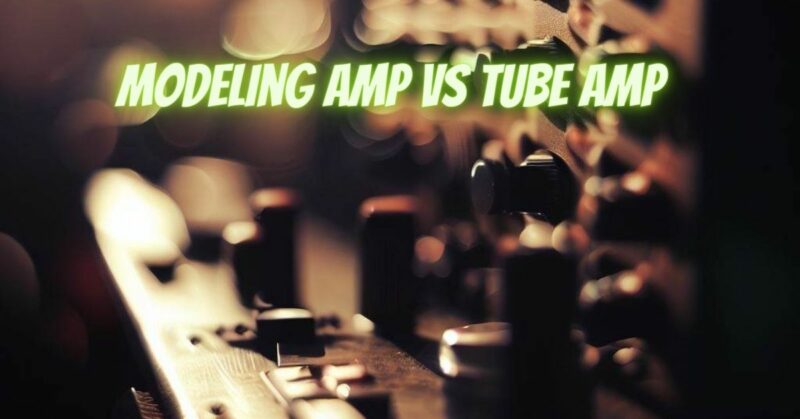The world of audio amplification offers a diverse range of options for musicians and audio enthusiasts seeking to amplify their instruments or audio sources. Two prominent contenders in this realm are modeling amplifiers and tube amplifiers. While both serve the purpose of amplification, they differ significantly in terms of technology, sound characteristics, and practical considerations. This article provides an insightful comparison between modeling amplifiers and tube amplifiers, highlighting their unique features and helping you make an informed decision based on your preferences and needs.
Modeling Amplifiers: A World of Versatility
Modeling amplifiers utilize digital technology to replicate the sound characteristics of various amplifiers, cabinets, and effects. They offer a vast array of presets that can mimic the tonal qualities of iconic amplifiers and create various effects, all within a single unit. This versatility is especially appealing for musicians who require a wide range of tones without the need for multiple physical amplifiers.
Key Features of Modeling Amplifiers
- Tonal Flexibility: Modeling amplifiers excel at delivering a multitude of tones, making them a go-to choice for musicians who perform diverse genres. They can replicate the sound of vintage tube amps, modern high-gain amps, and even hybrid combinations.
- Compact and Lightweight: Modeling amplifiers are often more compact and lightweight compared to traditional tube amplifiers, making them convenient for musicians who need portability without sacrificing sound quality.
- Built-In Effects: Most modeling amplifiers come equipped with a variety of built-in effects such as reverb, delay, modulation, and more. This eliminates the need for separate effects pedals.
Tube Amplifiers: Embracing Analog Warmth
Tube amplifiers, also known as valve amplifiers, are prized for their warm and organic sound. They utilize vacuum tubes (valves) to amplify audio signals, which introduces natural harmonic distortion and warmth that many musicians find incredibly pleasing to the ear. Tube amps are often associated with a vintage, classic sound that has stood the test of time.
Key Features of Tube Amplifiers
- Tonal Richness: Tube amplifiers are renowned for their unique harmonic content and dynamic response. They can provide a rich, saturated sound that’s especially favored by guitarists seeking a vintage or bluesy vibe.
- Touch Sensitivity: Tube amps are responsive to playing dynamics, meaning they respond to changes in your playing style with varying degrees of distortion and volume. This sensitivity adds a layer of expressiveness to your sound.
- Natural Overdrive: When pushed to higher volumes, tube amplifiers naturally introduce a smooth and musical overdrive, creating a desirable breakup that many players adore.
Choosing Between the Two
Ultimately, the choice between a modeling amplifier and a tube amplifier depends on your preferences, musical style, and practical considerations.
Choose a Modeling Amplifier If:
- You need a wide range of tones for various musical genres.
- Portability and ease of use are important to you.
- You want built-in effects without the need for external pedals.
Choose a Tube Amplifier If:
- You crave the warm, natural, and dynamic sound of tube-driven amplification.
- Tonal character and touch sensitivity are crucial to your playing style.
- You’re drawn to the vintage aesthetics and classic sound associated with tube amps.
The debate between modeling amplifiers and tube amplifiers revolves around versatility and tonal purity. Modeling amplifiers provide a wealth of options in a single package, while tube amplifiers offer an unmistakable analog warmth. By understanding the strengths of each type, you can make an informed choice that aligns with your musical goals and personal preferences. Whether you’re chasing modern versatility or embracing vintage charm, both options offer distinct pathways to achieving your desired sonic landscape.


